Nazis and Facists - Who Are They?
Segment #628
It is intellectually vapid and dishonest to call the conservative movement fascist or Nazi. Looking at basic definitions it is obvious that Trump is a capitalist populist that seeks to de-regulate and make government smaller. That is precisely the opposite of what the left has become who by their admissions want bigger government, mandated control over citizens, higher taxes, and social services for non citizens. In essence it is an ancient ploy that started after World War II when liberals seeking control began calling the right fascists.This movement began and flourished in our universities.D’Souza does a great job clarifying this tactic used against the right.
Nazi: Origin and MeaningThe word "Nazi" is a colloquial abbreviation for Nationalsozialistische Deutsche Arbeiterpartei (National Socialist German Workers' Party), the far-right political party led by Adolf Hitler in Germany. It derives from the first two syllables of "Nationalsozialistische" ("Na-zi"), a common German shorthand for party names, similar to "Sozi" for socialists.
Historical Development: Founded in 1919 as the German Workers' Party amid the Weimar Republic's chaos—hyperinflation, unemployment, and humiliation from the Treaty of Versailles—Hitler reshaped it into the NSDAP by 1920. The party gained traction through antisemitic propaganda, paramilitary violence (SA stormtroopers), and promises of national revival. Key events include the 1923 Beer Hall Putsch, the 1925 publication of Mein Kampf, and electoral wins leading to Hitler's chancellorship in 1933. The Nazis established a totalitarian dictatorship (Third Reich), enforcing Aryan racial ideology, eugenics, Lebensraum expansionism, and anti-communism. This culminated in World War II (1939–1945) and the Holocaust, systematically murdering 6 million Jews and millions more (Roma, disabled, LGBTQ+, Slavs). The regime collapsed in 1945 with Hitler's suicide and Allied victory.
Meaning and Evolution: Originally a self-descriptor, "Nazi" became a derogatory term by the 1930s, used by exiles and opponents to highlight its brutality. Post-war, via Nuremberg Trials (1945–1946), it signifies extreme authoritarianism, racism, militarism, and genocide. The "socialist" label was rhetorical to attract workers but contradicted policies that privatized industry, banned unions, and allied with big business (e.g., IG Farben). Today, it denotes neo-Nazism, Holocaust denial, or any ideology echoing white supremacy, as in groups like the Ku Klux Klan's modern offshoots or Atomwaffen Division. Etymologically, it's tied to German political slang, not true socialism.
Fascist: Origin and Meaning"Fascist" stems from the Italian fascio ("bundle" or "group"), evoking the ancient Roman fasces—a bundled axe and rods symbolizing magisterial power, unity, and strength through binding disparate elements. Benito Mussolini adopted it for his Fasci Italiani di Combattimento (Italian Combat Leagues) in 1919.
Historical Development: Emerging from Italy's post-WWI instability—veteran discontent, socialist strikes, and economic woes—Mussolini, a former socialist journalist, formed blackshirt squads to attack leftists. The Fascist Party consolidated in 1921, seizing power via the 1922 March on Rome, leading to Mussolini's dictatorship by 1925. Ideology emphasized ultranationalism, corporatism (state-mediated class harmony), imperialism (e.g., 1935 Ethiopia invasion), and anti-egalitarianism. It influenced global variants: Spain's Falange under Franco (1930s Civil War), Portugal's Salazar regime, and Hitler's Nazis via the 1939 Pact of Steel. Fascism glorified violence, tradition, and the leader's will, suppressing democracy through secret police (OVRA) and propaganda.
Meaning and Evolution: Coined by Mussolini, it described a syncretic authoritarianism blending nationalism and anti-Marxism. By the 1930s, it generalized to similar movements. After WWII defeats, scholars like George Mosse and Roger Griffin defined it as "palingenetic ultranationalism"—a revolutionary myth of national rebirth via myth, machismo, and plot paranoia (per Umberto Eco's 1995 "Ur-Fascism" essay listing 14 traits). The term now broadly labels right-wing dictatorships with totalitarian traits, from Perón's Argentina to modern accusations against populists. Dictionaries (e.g., Oxford) define it as "an authoritarian ultranationalist ideology emphasizing strong centralized power, militarism, and suppression of opposition."
Comparisons and DistinctionsNazism is a radical subset of fascism, sharing tactics but diverging in emphasis:
Both rejected Enlightenment liberalism and socialism, prioritizing the organic nation-state. Historians (e.g., Robert Paxton's The Anatomy of Fascism, 2004) note fascism's lack of dogma, allowing adaptations, while Nazism's pseudoscience made it uniquely exterminatory. Sources include Mussolini's Doctrine of Fascism (1932), Hitler's writings, and trials like Nuremberg, which codified their legacies as warnings against authoritarianism. Modern misuse (e.g., as generic slurs) risks diluting their precise horrors.
How did fascism—built on state control of industry, education, banks, churches, and media—end up labeled as “right wing” when those are traditionally left-wing platforms? Filmmaker and author @dineshdsouza joins PragerU CEO @realtalkwithmarissa to unpack how progressive academics redefined fascism after World War II to distance it from the left. D’Souza also explains how this same distortion shapes the narrative around antisemitism on both the left and the right.


